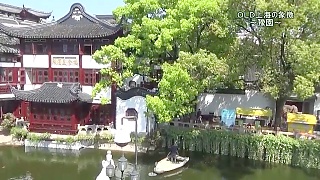
|
With Beijing Old Liu ...
Mangshan Wuzhifeng, Xiongqi, and Waterfalls Visitor Guide
Mangshan Wuzhifeng, located in Hunan Province, is a breathtaking natural wonder renowned for its rugged peaks, lush forests, and cascading waterfalls. With its nickname "Wuzhifeng" (Five-Finger Peaks), the area is a perfect destination for hiking enthusiasts, nature lovers, and those seeking a tranquil escape.
How to Get There
By Air: The nearest airport is Changsha Huanghua International Airport. From there, you can take a train or bus to Mangshan Scenic Area.
By Train: The high-speed rail to Chenzhou or Yongzhou offers connections to Mangshan by bus or private car.
By Road: Direct buses from Chenzhou or nearby towns are available to the scenic area.
Top Attractions
Wuzhifeng (Five-Finger Peaks)
These iconic peaks resemble a hand reaching towards the sky. The view from the summit provides panoramic vistas of the surrounding forested valleys and rugged terrain. It's a must-visit for photography and hiking enthusiasts.
Xiongqi Waterfalls
The area is dotted with numerous waterfalls cascading from great heights. The Xiongqi Waterfalls are particularly stunning, with their powerful flow and mist creating a magical atmosphere. Visitors can enjoy the cooling spray during warm months.
Mangshan Forest
This lush forest is home to diverse flora and fauna. The forest is known for its giant ancient trees, rare plants, and a variety of bird species. It’s a great spot for nature walks and birdwatching.
Cloud Sea Viewing
On misty mornings, the valleys below Wuzhifeng are often filled with a sea of clouds, creating an otherworldly landscape. Sunrise views are particularly spectacular from designated observation decks.
Golden Dragon Pool
Located within the scenic area, this serene pool is surrounded by verdant greenery and is perfect for quiet reflection and relaxation.
Activities and Experiences
Hiking trails leading to the peaks and viewpoints.
Exploring the waterfalls and enjoying the cool mist.
Camping under the stars for an immersive nature experience.
Photography of the unique landscapes and vibrant biodiversity.
Birdwatching and wildlife spotting in the forest.
Best Time to Visit
Spring (March–May): Mild weather and blooming flowers make this season ideal for exploring.
Autumn (September–November): Cool temperatures and colorful foliage enhance the scenic beauty.
Summer (June–August): The waterfalls are at their most vibrant due to the rainy season, offering refreshing experiences.
Local Tips
Wear sturdy hiking shoes and bring rain gear if visiting during the rainy season.
Carry water and snacks, as facilities may be limited on certain trails.
Arrive early to enjoy the best light for photography and avoid long waits at viewpoints.
Additional Information
Entrance Fee: Tickets are required for access to the scenic area and can be purchased at the entrance or online.
Transportation: Shuttle buses within the scenic area provide access to major attractions.
Accommodations: Nearby towns offer a range of hotels and guesthouses, including eco-friendly lodges.
With its dramatic peaks, enchanting waterfalls, and serene forest trails, Mangshan Wuzhifeng and Xiongqi Waterfalls promise an unforgettable experience for every nature enthusiast.
Detian Waterfall Visitor Guide
Detian Waterfall, located on the border between China and Vietnam in Guangxi Province, is one of Asia's most magnificent natural wonders. The cascading falls span both countries, offering a unique blend of natural beauty and cultural significance.
How to Get There
By Air: The nearest airport is Nanning Wuxu International Airport, approximately 210 km from the waterfall. From Nanning, you can take a bus or hire a private car to reach the site.
By Train: Trains to Chongzuo or Daxin County provide access to Detian Waterfall via local transportation.
By Bus: Buses from Nanning or nearby towns like Daxin County operate regularly to the scenic area.
Top Highlights
The Waterfall
Detian Waterfall is a multi-tiered cascade that stretches over 200 meters wide, with a drop of 70 meters. It is fed by the Guichun River, creating a thundering spectacle, especially during the rainy season when the water flow is at its peak.
Border Views
As the waterfall straddles the border between China and Vietnam, visitors can enjoy views of both countries. Vietnamese fishing boats often add charm to the scene, and the unique geography makes this a one-of-a-kind destination.
Rafting Experience
Visitors can take a bamboo raft to get up close to the falls, feeling the mist and hearing the roar of the cascading water. It's an exhilarating way to experience the power and beauty of the waterfall.
Surrounding Scenery
The area around Detian Waterfall is lush with greenery, karst formations, and rice terraces, creating a serene and picturesque environment for exploration and photography.
Local Culture
The region is home to the Zhuang ethnic group, and visitors can experience traditional Zhuang culture, including music, dance, and local cuisine.
Best Time to Visit
Spring (March–May): The weather is mild, and the scenery is vibrant with blooming flowers and fresh greenery.
Summer (June–August): The rainy season enhances the water flow, making the falls even more majestic.
Autumn (September–November): Clear skies and cooler temperatures provide excellent conditions for sightseeing.
Activities and Tips
Take a bamboo raft ride to experience the falls up close.
Visit the observation decks for panoramic views of the waterfall and surrounding landscape.
Explore nearby villages to learn about local customs and enjoy authentic Zhuang cuisine.
Bring a waterproof camera or phone case to capture the beauty without worry.
Wear comfortable shoes for walking and exploring the area.
Additional Information
Entrance Fee: Tickets are required to access the Detian Scenic Area and can be purchased online or at the entrance.
Transportation: Shuttle buses are available within the scenic area to help visitors access key spots.
Accommodations: Nearby towns offer a variety of accommodations, including guesthouses and boutique hotels.
Whether you're seeking natural beauty, cultural immersion, or a peaceful retreat, Detian Waterfall offers a memorable experience in one of China's most enchanting landscapes.
|
 Planning war on China – the succinct version
Planning war on China – the succinct version



























